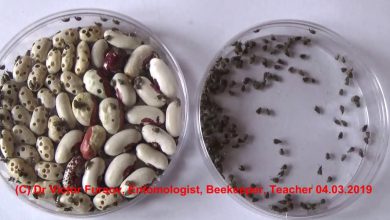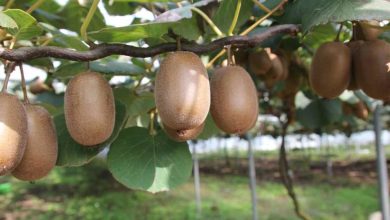Care of the gardenia or Cape jasmine
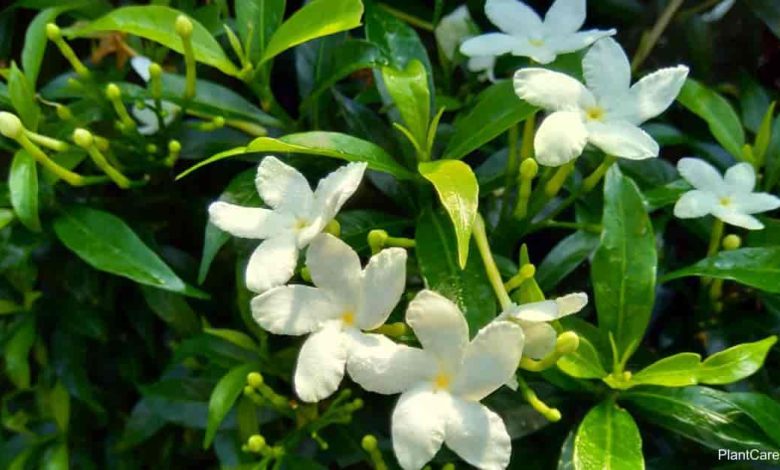
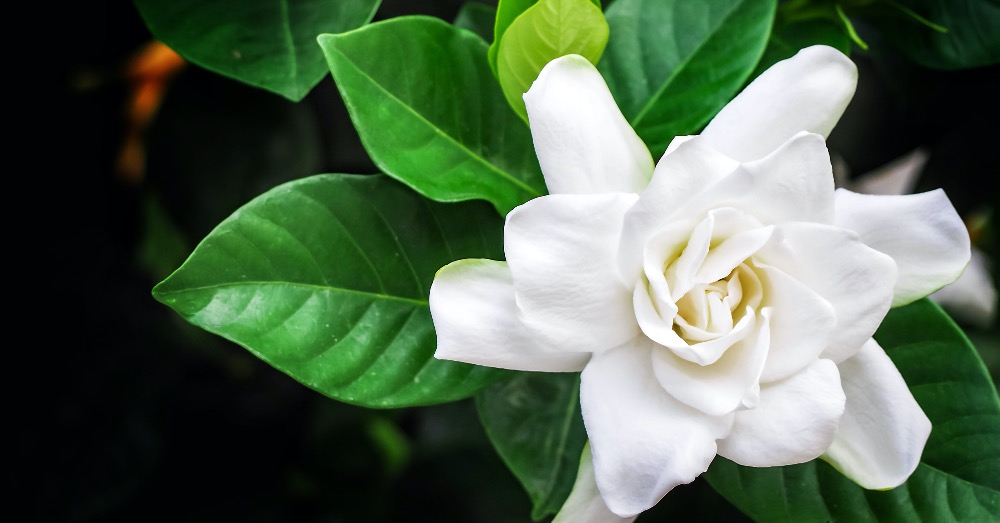
It is probably one of the most beautiful and elegant blooms that exist. But let’s not fool ourselves: getting it means following the care of the gardenia to the letter. Something that forces us to pay close attention to the plant, and that we should rule out in case we are starting out in the world of gardening. Achieving its flowering is complicated, yes. But enjoying its incredible flowering and its particular aroma is a prize that is well worth it.
The gardenia is one of those flowers that we have assumed as our own despite coming from China. His popularity is such that to mention his name is to inevitably think of that bolero performed by Antonio Machín that forms part of the history of music. But it is interesting to know that, despite this being the most popular theme, the gardenia has a good number of songs in which it is used as a romantic symbol and declaration of love.
Apart from the anecdotes, if we want to enjoy one of the most beautiful shrubs in the plant world, it is important to know in detail the care of the gardenia. An outdoor plant that, depending on the latitudes, we will have to grow indoors.
7 ESSENTIAL GARDENIA CARE FOR ITS FLOWERING
It is clear that one of the main reasons to have a gardenia is its flower. But let’s not stop at that. Although there is no doubt that its spectacular nature is the most striking, the appearance of the plant should not be detracted from. The gardenia is one of the most beautiful ornamental shrubs, thanks to its rounded shape and characteristic evergreen leaves. They are not only striking because of their intense and bright green color. In addition, its lance shape makes the whole bush extremely beautiful.
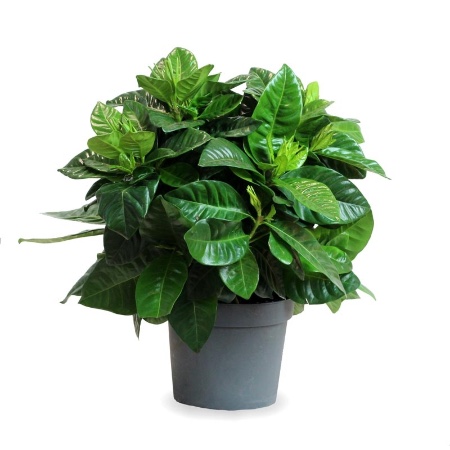
Something extremely important must be taken into account in the care of the gardenia. Although it admits to be cultivated indoors and outdoors, there will be small differences in its cultivation depending on where we have it. A factor that we have to firmly consider if we want our plant to prosper and flourish.
The same does not happen with respect to the place of planting. The gardenia admits cultivation in a pot although it undoubtedly prefers to be planted directly in the ground. How can this affect the plant? Simple: when it comes to growth. In a pot it will be rare for it to exceed half a meter in height, while planted in the ground it can even reach three.
1. The type of soil, essential for the development of this shrub
The gardenia is an acidophilic plant, so it demands an acidic soil in which to grow. A detail that we have to take care of, whether it is planted in the ground or if we enjoy it in a pot.
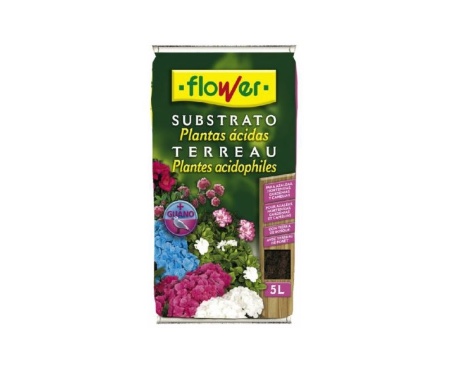
For its correct development, the gardenia demands a pH around 5. Something that we can give it by using a substrate for acid plants in its cultivation. And no, we cannot neglect this detail. If it does, it is more than likely that our plant will suffer from what is called chlorosis in its leaves. Or, put another way, a lack of iron due to having a pH in the wrong substrate.
2. The amount of light, key in gardenia care
We arrive at the first of the gardenia care that differs between outdoor and indoor planting. But, beyond the details, let’s have something clear: we are talking about a bush that demands a lot of light to be able to live and flourish.
If we grow our gardenia indoors, the ideal is that we place it in a very bright place. What’s more: the ideal is near a window, although always trying not to receive direct sun.
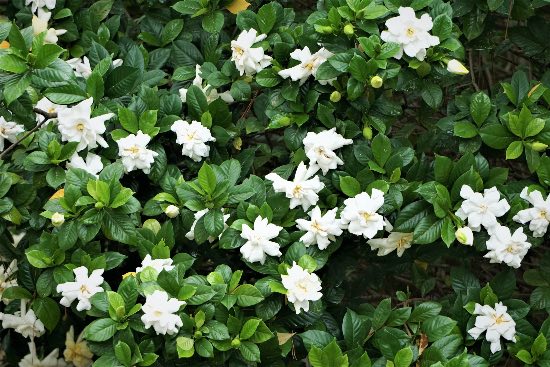
If we have our gardenia planted outdoors, the ideal is to find a semi-shade place for it. Something to take care of especially if we live in a very hot climate. You have to know that the gardenia does not tolerate the midday sun added to high temperatures. So, if your intention is to plant it in the garden or on a terrace, it is important to find a location that meets these needs.
3. The temperature, fundamental for its survival
It is, without a doubt, one of the crucial care of this bush. Starting by saying that it is a plant of tropical origin can give us many clues about its temperature needs.
The gardenia grows and especially blooms when it is exposed to warm temperatures. Of course: curiously, to flourish exuberantly, it needs significant temperature fluctuations between day and night. While during the day its ideal scenario is 30 degrees, to bloom profusely it will need cool nights with 15. If our gardenia belongs to a variety with two annual blooms, in spring and winter; it will also demand cool nights in the months of September and October.
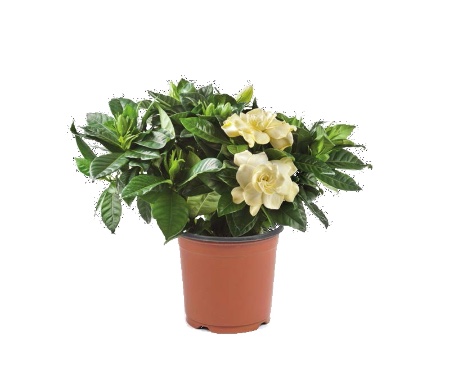
But be very careful because you have to be very clear: except for a few varieties, the gardenia does not tolerate frost. What’s more: if it is exposed to one and no matter how much we follow the advice on how to recover a plant after a frost, the most common thing is that we have no way of rescuing it from the cold. So, given that prevention is better than being upset,
4. Irrigation and the type of water, two aspects to monitor
Another aspect to pamper in the care of the gardenia. We are talking about a plant that demands a constantly moist substrate but, on the other hand, does not tolerate waterlogging in its roots. What’s more: getting out of hand can cause its roots to rot. For this reason, and especially if we have it planted in the ground, it is essential that it has good drainage. In the case of having it planted in a pot, a perfect option for them are self-watering pots. Thanks to them, our gardenia will have the humidity it needs without human excesses.
As important as the amount of water is the type we use. As a good acidophilic plant, it does not tolerate heavy water. What does this mean? That the water with which we irrigate cannot have lime. The ideal for gardenia is distilled water or, failing that, rainwater.
Finally and for those gardenias grown indoors, it is important that our plant has a certain environmental humidity. You will need it to properly hydrate your leaves.
5. Fertilizer, another essential gardenia care for its flowering
Just as important as giving our plant the type of soil it demands is that the substrate is fertile. Only with rich soil will our gardenia be able to flourish properly.
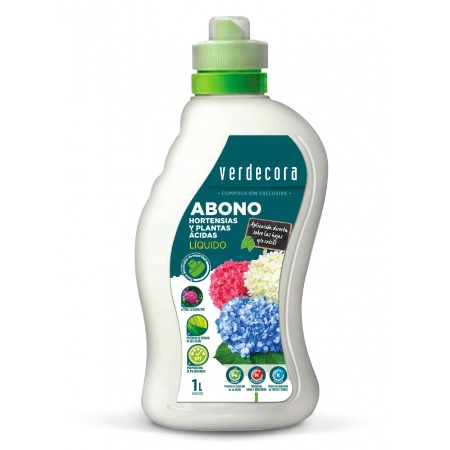
Getting it happens, inevitably, by fertilizing it regularly. During the spring and summer months, we can pay at a rate of one dose per month to promote flowering. It is essential that this gesture be with a liquid fertilizer for acid plants.
6. Pruning twice a year
Knowing the tips for correctly pruning plants is just as important as knowing if a certain plant needs it. And in the case of the gardenia, this task will only be required twice a year: once dedicated to the maintenance of the bush, and another that promotes flowering.
The first, maintenance pruning, will have to be carried out at the beginning of winter, and will consist of eliminating the parts of the gardenia that are in poor condition, sick or dead.
The second, although not essential, will promote flowering. The ideal time is mid-summer and it will basically consist of pinching to encourage the plant to branch out.
7. Pests, uncomfortable visitors to control
And we come to the last of the gardenia care that, not for that reason, is less important. In the same way that we like this bush, there are a good number of insects that will lay their eyes on it. We refer to the aphid, the cochineal or the red spider.

If we detect the presence of any of them in our plant, it is important to stop the infection as soon as possible. Eliminating garden pests is key to maintaining the health of our gardenia.
Do you dare to enjoy this demanding and wonderful plant? Do it! When you see it in bloom, you will not regret having pampered it so much.


![Photo of How to Prune an Apple Tree: [Complete Guide]](https://www.complete-gardening.com/wp-content/uploads/2022/08/how-to-prune-an-apple-tree-complete-guide.gif)
